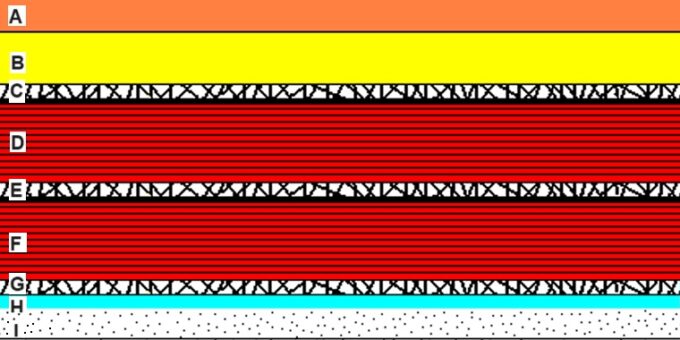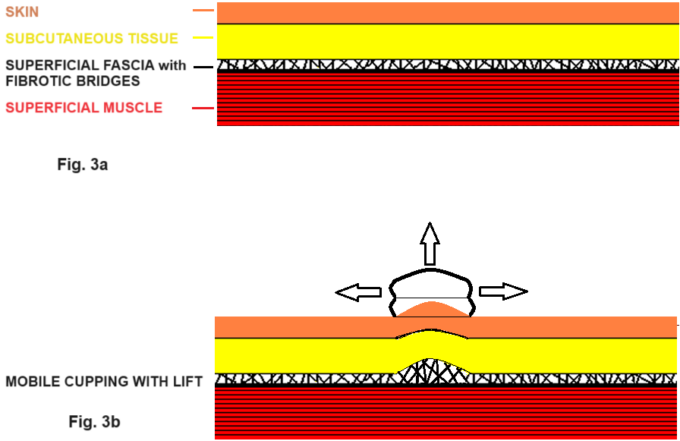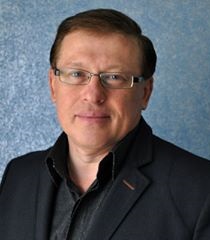By Dr. Ross Turchaninov, Phoenix, AZ
In an article about the importance of Hyaluronic Acid for therapists Medical Massage Courses & Certification | Science of Massage Institute » WHY THERAPISTS NEED TO KNOW ABOUT HYALURONIC ACID – PART II, we discussed ways to decompress superficial and deep fascia. In one of the videos, we showed the application of Mobile Cupping with a Vertical Lift.
Our colleague, Boris Prilutsky, LMT, asked for clarification on adding a vertical lift to mobile cupping. Boris is an exceptional therapist and educator. He is also an expert in the clinical application of cupping and shares his expertise with other therapists. Bris introduced us to the silicone jars, so we felt obligated to participate in a professional discussion.
Let’s start with Fig. 1, which presents the basic arrangement of soft tissues in the anterior arm.

Fig. 1. The basic arrangement of soft tissues in the anterior arm
A – Skin; B – Subcutaneous tissues; C – Superficial Fascia with fibrotic bridges; D – Biceps Brachii Muscle;
E – Deep Fascia with fibrotic bridges; F – Brachialis Muscle; G – Fibrotic bridges between Brachialis Muscle and Periosteum of humerus; H – Periosteum of humerus; I – Humerus
As readers may see, each layer of soft tissue is separated by a line of fibrotic bridges, which give the soft tissue stability and elasticity. Normal elasticity allows the layers of the soft tissue to slide against each other during our activities. This is the foundation of full ROM.
Lost elasticity in fibrotic bridges is the first step in developing complex somatic abnormalities, which end up with soft tissue adhesions. Let’s look at the video below, considering that it presents a soft tissue arrangement on the upper shoulder. You may see skin with subcutaneous tissue; fibrotic bridges originated from the superficial fascia, which covers the trapezius muscle and, finally, the trapezius muscle itself.
At the beginning of the video, the healthy superficial fascia allows normal sliding between the skeletal muscles and the skin with the subcutaneous tissue. Next is a shortening of the bridges, and gradually, adhesions form in the area where fibrotic bridges become shorter. Eventually, fully formed adhesions glue layers of soft tissues against each other. Medical Massage allows restoring normal mobility between soft tissue layers by gradually stretching fibrotic bridges using various techniques, including Cupping. This part is illustrated in the final part of the video.
Fig. 2. Formation of adhesions between soft tissue layers
Thus, maintaining the elasticity of fibrotic bridges is a key component of successful somatic rehabilitation. Since fibrotic bridges originate in the superficial and deep fascia, restoring the health and elasticity of the fascia is a critical part of a correctly formulated medical massage session.
Generally speaking, therapists have a limited set of clinical tools, which is why every detail matters, and optimizing performance is a critical factor in stable clinical outcomes.
Mobile cupping without vertical lift is a valuable clinical tool. However, its primal target is the skin. Secondarily, it decompresses superficial fascia, stretching the fibrotic bridges but only in the horizontal direction. Yes, in a way, it is a lateral shift. However, the vertical lift added to the mobile cupping makes decompression of superficial fascia more efficient and clinical benefits more sustainable.
Fig. 3a illustrates the normal soft tissue arrangement in the posterior shoulder: skin, subcutaneous tissue, superficial fascia with fibrotic bridges, and finally, the superficial muscle (trapezius).
Fig. 3b illustrates the silicone jar’s application in a mobile regime with vertical lift. As readers may see, vertical lift, added to the cupping, allows vertical stretching of the fibrotic bridges (vertical black arrow) while horizontal stretching is still applied (two horizontal black arrows). Such a combination more efficiently separates the skin and subcutaneous tissues from the trapezius muscle, fully decompressing superficial fascia by stretching fibrotic bridges also vertically.

Fig. 3. Mobil Cupping with Vertical Lift
Furthermore, there is a critical consideration. The vacuum generated during the cupping must be very moderate to avoid bleeding between fibrotic bridges. If that happens, bleeding will harden fibrotic bridges, ruining the therapy’s effect.
Silicone jars have an ideal shape for mobile cupping with vertical lift, and they give therapists perfect control over the intensity of the vacuum they intend to generate within the jar. For example, fire used during cupping doesn’t give the therapist complete control of the vacuum needed to decompress superficially located soft tissues.
Thus, adding vertical lift to mobile cupping gives extra clinical benefits in the decompression of superficial fascia, which is, in turn, the first step in treating muscles’ hypertonicity.
To learn more about Medical Massage, its clinical application, and step-by-step evaluation of the soft tissues, consider joining SOMI on May 11-12 for a Live Webinar on Medical Massage Theory. This fascinating class is a pre-requirement for the SOMI’s Medical Massage Program. Here is the link with all the details: Medical Massage Courses & Certification | Science of Massage Institute » SOMI’s MM Techniques Webinar June 15-16, 2024
About The Author
Dr. Turchaninov graduated with honors from the Odessa Medical School in Ukraine in 1982. He was admitted to the residency program of the Kiev Scientific Institute of Orthopedy and Rehabilitation, which he completed in 1985. In 1989, Dr. Turchaninov obtained his PhD degree in Medicine,
From 1986 to 1988, he worked as a supervisor of the rehabilitation program for the Ukrainian Ministry of Public Health. During these years, he also worked with the medical team of the relief effort following the Chornobyl nuclear plant disaster.
In 1992, Dr. Turchaninov was invited to work in rehabilitation centers in New York City and Scottsdale, Arizona, as head of their medical massage program.
Dr. Turchaninov founded the Science of Massage Institute, which is dedicated to bringing clinical science into massage therapy and educating therapists on the clinical applications of medical massage. He is the Editor in Chief of the Journal of Massage Science. He lectures in the U.S. and abroad on manual therapy and medical massage issues and is regularly invited to speak at American and international conferences.
Dr. Turchaninov is the author of more than 100 scientific papers and publications in European and American medical journals. He authorizes three major textbooks: Medical Massage, Volumes I and II, and Therapeutic Massage: A Scientific Approach.
Dr. Turchaninov lives in Phoenix, Arizona. His interests are literature, art, history, and travel.
Category: Medical Massage
Tags: 2024 Issue #1

